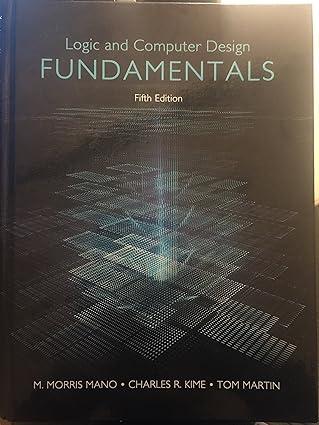A simple well-known game, tic-tac-toe, is played on a three-by-three grid of squares by two players. The
Question:
A simple well-known game, tic-tac-toe, is played on a three-by-three grid of squares by two players. The players alternate turns. Each player chooses a square and places a mark in a square. (One player uses X and the other O.)
The irst player with three marks in a row, in a column, or on a diagonal wins the game. A logic circuit is to be designed for an electronic tic-tac-toe that indicates the presence of a winning pattern. The circuit output W is a 1 if a winning pattern is present and a 0 if a winning pattern is not present. For each of the nine squares, there are two signals, Xi and Oi . Two copies of the circuit are used, one for Xs and one for Os. Form a condensed truth table for W(X1, X2, . . . . X9).
(a) Design the X circuit for the following pattern of signals for the squares:

(b) Minimize the W output for the X circuit as much as possible, using Boolean algebra.
Step by Step Answer:

Logic And Computer Design Fundamentals
ISBN: 9780133760637
5th Edition
Authors: M. Morris Mano, Charles Kime, Tom Martin





